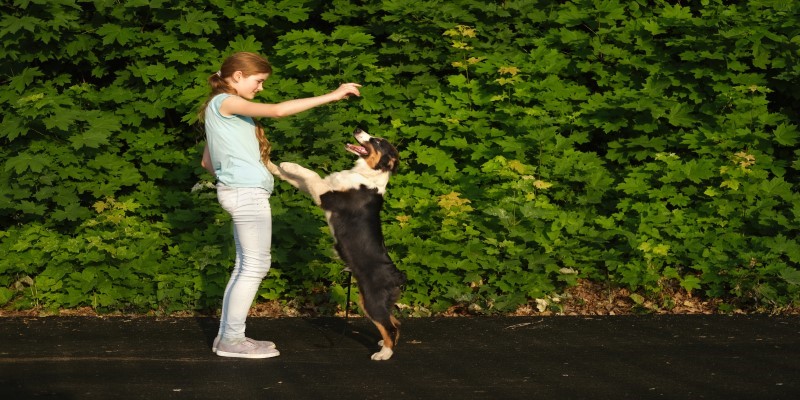Canine Communication: Decoding Your Dog’s Body Language
Dogs are remarkable companions, and part of what makes them so special is their ability to communicate with us, often without saying a word. While humans primarily rely on verbal communication, dogs express themselves largely through body language. Understanding how your dog communicates can deepen your bond and help you respond appropriately to their needs and feelings. In this article, we'll delve into the various aspects of canine communication, highlighting the nuances of body language and what it can reveal about your furry friend.
The Basics Of Canine Body Language
Body language in dogs encompasses a range of physical signals that convey their emotions and intentions. Observing a dog's posture, facial expressions, tail movements, and ear positions can provide valuable insights into their state of mind. A relaxed dog will exhibit different behaviors compared to an anxious or excited one.
For instance, a dog that feels comfortable may have a loose, wagging tail and a relaxed body posture, whereas a fearful dog might tuck its tail between its legs, lower its body, and avoid eye contact. These signals are often instinctual and are part of a dog's natural repertoire for interacting with their environment and other animals, including humans.
Key Body Language Signals
Tail Movements
A dog's tail is one of the most expressive parts of its body. The way a dog wags its tail can indicate various emotions. A wagging tail doesn't always mean a dog is happy; the speed, direction, and height of the wag can provide context.

A tail held high and wagging quickly often signifies excitement and happiness, while a tail held low and wagging slowly can indicate uncertainty or submission. Conversely, if the tail is tucked tightly against the body, it usually suggests fear or anxiety. Understanding these signals can help you assess how your dog is feeling in different situations.
Posture And Movement
The overall posture of a dog reveals a lot about its emotional state. A relaxed dog will typically have a loose, open stance, with their body slightly turned away from perceived threats. If a dog stands tall with its chest out and head raised, it may feel confident or dominant.
Conversely, a dog that exhibits a stiff body raised hackles, or a lowered head is likely to feel threatened or aggressive. Understanding these postures can help you create a safer environment for your dog and others around it.
Ear Position
Dogs have highly mobile ears that can express a range of emotions. The position of a dog's ears can indicate their mood and level of alertness. Ears that are perked up and facing forward often signify curiosity or excitement, while ears that are flattened against the head may indicate fear or submission.
Additionally, if a dog’s ears are relaxed and in a neutral position, it suggests that the dog is calm and comfortable. Paying attention to ear positioning can provide critical context to your dog's overall body language.
The Importance Of Facial Expressions
A dog's face is a crucial part of its communication toolkit. While they may not have the same range of expressions as humans, dogs can still convey a wealth of information through their facial cues. For example, a dog with a relaxed, open mouth and a soft expression may be content, while a dog that shows its teeth and has a tense face is likely to feel threatened or aggressive.

Eye contact also plays a significant role in canine communication. Direct eye contact can be perceived as a challenge or threat, especially in a social setting with other dogs. Conversely, soft, relaxed eye contact can indicate trust and affection. Understanding these facial cues can help you navigate your interactions with your dog more effectively.
Context Matters: Interpreting Body Language In Different Situations
Interpreting your dog’s body language involves considering the context in which the behavior occurs. A dog’s environment, the presence of other animals, and even the time of day can influence their mood and communication style. For instance, a dog might display signs of excitement when meeting a new person in a park but may appear anxious when visiting the veterinarian.
Similarly, a dog may show protective behaviors when it perceives a threat to its family or territory. Being aware of these situational cues can help you respond appropriately and create a supportive atmosphere for your dog.
Building A Stronger Connection
Understanding canine communication not only helps you respond to your dog's needs but also strengthens your bond with them. When you recognize and respond appropriately to your dog’s body language, it fosters trust and reduces anxiety. This mutual understanding enhances your relationship, making interactions more enjoyable for both of you.

To improve your communication with your dog, consider spending time observing their behaviors in various situations. Use positive reinforcement to encourage behaviors you want to see more of, like sitting calmly when meeting new people. The more you engage with your dog and respond to their cues, the better you’ll become at interpreting their body language.
Training And Body Language
Training your dog also enhances their ability to communicate effectively. Basic obedience training not only establishes good behavior but also reinforces the human-dog bond. Teaching commands and reinforcing positive behavior can help your dog feel more secure and confident, which in turn affects their body language.

Additionally, using consistent signals and cues during training can help your dog learn to interpret your body language. For example, if you consistently use a specific hand gesture for a command, your dog will begin to associate that gesture with the expected behavior. This two-way communication can lead to a deeper understanding between you and your dog.
Recognizing Signs Of Stress Or Anxiety
It’s crucial to be aware of signs that indicate stress or anxiety in your dog. Recognizing these signals can help you take proactive steps to alleviate their discomfort. Common signs of stress include excessive panting, pacing, hiding, or changes in appetite.

If you notice these behaviors, consider adjusting your dog’s environment or routine to reduce stress. Providing a safe space, engaging in regular exercise, and ensuring mental stimulation through toys or training can all help mitigate anxiety.
Conclusion
Understanding canine communication is an ongoing journey that enriches the relationship between you and your dog. By paying attention to your dog’s body language, you can respond more effectively to their needs and emotions. This knowledge not only improves your dog's quality of life but also fosters a deeper bond built on trust and understanding.
Related Posts
- The Health Benefits Of Owning A Pet: How Pets Improve Mental Well-Being
- 11 Amazing DIY Pet Toys You Can Easily Make
- Aging Gracefully: Caring For Senior Pets And Their Unique Needs
- Travelling with Pets: How to Make it a Stress-Free Adventure?
- The Science Behind Pet Emotions: Do They Feel Like Humans?
- How To Build A Pet-Friendly Garden: Safe Plants And Features For Pets